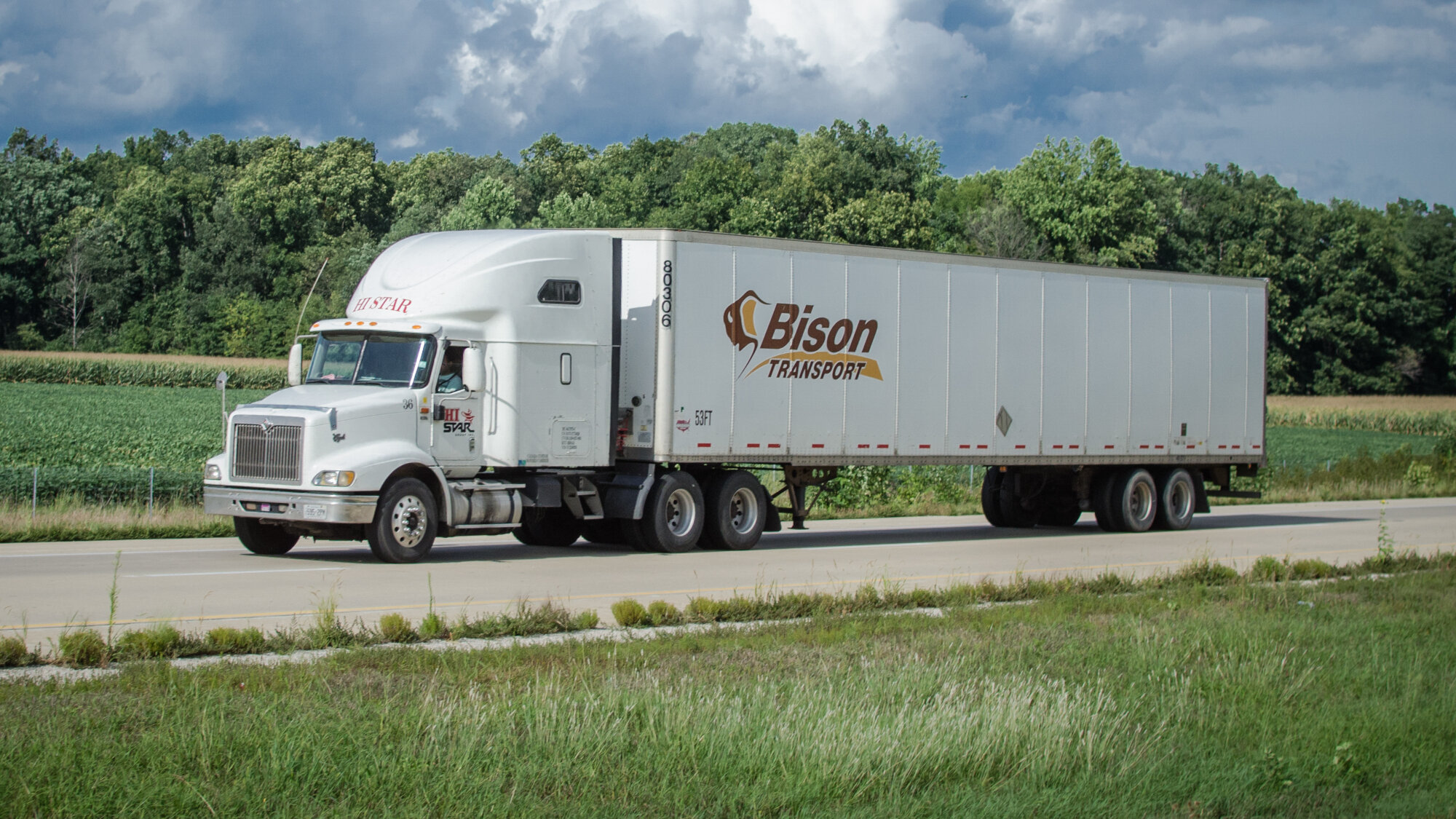
It’s been 15 months since we published the original “Nine Traits” article. That article turned in into a series of presentations that my colleague Jack Porter and I have delivered at various industry and state association events. Much has happened in 15 months, including the strategies and tactics I detailed in the original post. Trucking companies, large and small, continue to adapt, grow and reinforce the importance of truckload in the global supply chain. During that time, the vast majority of our carrier members benefited from one of the most robust freight markets in their lifetimes. Although things have softened since, most results are still well ahead of same period in 2017. Technology has taken center stage over that same time period. The launch and growth of FreightWaves (TCA’s partner on truckloadIndexes.com) was a critical inflection point with respect to freight-related technology and innovation. Trucking is now attracting talent and dollars that would have been otherwise inconceivable before FreightWaves. With change and innovation (regardless of industry), it will attract potential threats to incumbent players. These threats will continue, despite resistance. The high performing companies in the TCA Profitability Program are turning those threats and ideas into Opportunities and Advantages.
Over the past few years, I have had the privilege and honor of being an active observer of over 100 trucking companies throughout North America. This observation has not been done in a vacuum. Via watching, questioning and learning from the members of inGauge, as well as the Best Practice Groups (the foundation of the TCA Profitability Program), this process has been the equivalent of an education that should have cost hundreds of thousands of dollars – however, this is my job. To state that I’m grateful for this opportunity, and the friendships I’ve made along the way is the understatement of the century.
From countless conversations (both one-on-one, and group discussions) with CEOs, CFOs, VPs, Operations Managers and front-line people, I have recognized and tried to distill some of the common denominators of those companies (and their leaders), who continually out-perform the rest. Our gauge of high performance is primarily profitability. In addition, we also look at those companies who may have some temporary issues with their profitability and overall performance – but all as a result of a change in strategic direction (e.g. changing operating mode, re-engineering their freight network , re-investing for the long term). Here are the nine common traits of High Performing Trucking Companies (and their Leaders). Please note, ‘Leader’ does not equal executive. A leader can be anyone from the driver seat, right up to the c-suite.
Top Performers Add by Subtraction – Everyone wants to use the latest tools, execute on the latest plans, and automate processes to improve long-term performance. However, the top performers understand that the capacity of their human assets has a terminal velocity. To act on new ideas, opportunities and business plans, a company must first eliminate redundant or non-vital tasks and processes to clear the path for reinvention and sustainability. Further, the very act of identifying the things that “we are not going to do anymore” can be as beneficial as taking on a new project or seizing a new opportunity. Add the phrase “Add by Subtraction” to your daily mantra.
2019 Update: Top Performers also ‘add’ by sometimes doing ‘nothing’. Carriers are constantly bombarded with new technology, and freight opportunities. It takes deep discipline to say no, or simply ignore many of these time and resource extractors. Do you have an internal technology strategy? Do you have a strategic plan with respect to the business you’re going to transact? Avoid?
Top Performers Invest in both Tangible and Intangible Assets – when I speak to those in the industry, one of the common phrases I hear is “this is a simple industry, we get paid to deliver X from A to B – end of story”. As soon as I hear this statement (or a derivation of it), I immediately stop listening. There are very few industries with as many variables as trucking. Where there are many variables, there are many opportunities. The top performing companies know that simply investing in more trucks isn’t going to cause a net gain in gross margin and ROI. More and more, the top performers are looking at intangible assets (e.g. proprietary software, specialized complimentary services, highly skilled labor, and vertical integration) as the logical step to gain an advantage. Further, they also understand that building intellectual property can be very expensive endeavor – but via incremental development and iteration (starting with building a M.V.P. – Minimum Viable Product), they can reduce the potential capital cost and expedite ROI. Want to build a smart capacity network using the latest Blockchain technologies? Why not build your own? Maybe commercialize it? Companies with strong Balance Sheets and both Tangible and Intangible Assets don’t go looking for a buyer – the buyers are lined up in the parking lot (with a big check).
2019 Update: During our presentations, this specific trait generates a lot of response and emotion. We aren’t suggesting you build your own TMS (the foundation of your business), however we are definitely observing a growing number of companies building proprietary software to complement their existing infrastructure. They are building and keeping these assets, and (as a by-product) building true competitive advantage. On a side note, many people do not understand the true definition of competitive advantage. For more info on that, Good to Great by Jim Collins is an excellent resource for distilling this concept. TPP quote “If we have the choice about adding more trucks or more developers, we choose developers first”
Top Performers Build a Skilled Workforce – a common trait of all the top performing companies in the TCA Profitability Program is that their leaders, and as a by-product, their team members are hungry for knowledge. Learning from a strategic point of view does not have to be formal – reading books, listening to podcasts, and participation in Best Practice Groups, and Industry events are all great ways to refine focus and get ahead of the competition. From a tactical point of view, more focus and discipline is required. Some of these companies have very formal systems and processes in place for ensuring that both their drivers and non-drivers continue to develop themselves. This results in a workforce with a purpose. For industry-specific training, there are companies offering customized and semi-customized platforms for knowledge delivery (e.g. Carriers Edge, JJ Keller, Pro-tread). For other skills (in some cases very specialized), there are other avenues available, at a very low cost and high ROI. Instead of looking via traditional routes, checkout one of the MOOC (Massive Open Online Course) providers such as Udemy, Cousera, Khan Academy and edX. Want to develop group of Data Analysts? There is a course for that. Want to help your operations team learn finance? There is a course for that as well. Want to become an excel ninja? Start here. In summary, top performers stay curious and keep learning. You want to build a top-performing trucking company – you must first start with the stuff between the ears.
201
9 Update: Aside from innovation management, workforce development is the most popular discussion topic among TPP members. This has bubbled to the top due to introspection. Many companies have identified that if they want to evolve from a trucking company to a technology company that delivers freight with trucks and ideas, they need to upgrade their people. TCA has recognized this specific need and is in the process of re-vamping and re-imagining Truckload Academy, with the first group of courses to be delivered by late 2019 (with the help of TPP members).
Top Performers Get Out of the Whirlwind – How can you get better if you’re stuck in the daily chaos of the trucking industry. Putting out fires, responding to customers and retaining your drivers are all some of the required, and time-consuming exercises you must do most days. However, the top performers understand that improvement requires contemplation – and contemplation can’t happen with the phone ringing and a thousand unanswered emails staring at you in the face. Getting out of the daily whirlwind can simply mean going for a walk (in solitude). It worked for Tesla, Hemingway, Darwin, Dickens and Ben Franklin – it might work for you! Other alternatives are participation in a Best Practice Group, local networking and investment clubs, and industry sponsored events. Whatever you choose – make a commitment to it.
2019 Update: Nothing to add here, this holds true today, and will hold true in the future. Key thing to keep in mind is that honest introspection is key to success in business and in life. You need to make time for this!
Top Performers Embrace the Concept of Meritocracy – Although many top performing trucking companies have formal organizational structures, all of them embrace the concept (formally or informally) of an Idea Meritocracy. You can learn more about Idea Meritocracy here. Good ideas sometime result from exposure to, and experience within an industry, market, or skillset. However, some of the best ideas can come from those with fresh eyes and inexperience. Either providing a contrarian approach or a pivot. Suppressing ideas is easy – reinforce the chain of command and simply outlaw discussion above or throughout the chain (resulting in what is commonly referred to as ‘knowledge silos’). The most negative connotation associated with the word ‘bureaucracy’ is status quo, and the suppression of good ideas. If you don’t provide a way for the frontline (drivers and non-drivers) to suggest new ideas, and a way to actively contemplate and test these ideas – the sustainability of your business, in the long term, is questionable. Get rid of the barriers, add new blood (interns etc), question the status quo, embrace change, get better.
2019 Update: Tenure is yesterday. If your company does not have a mechanism for identifying solutions and opportunities outside the “chain of command” you are doing a disservice to all your stakeholders and the industry. Trucking needs to innovate – remove the barriers to innovation today!
Top Performers Spend 95% of Their Time Listening – After participating in over 40 Best Practice Group meetings over the past couple of years, one common thing I notice is that the top performers always listen (way) more than they speak. However, when they speak, the room goes quiet and the rest of the group starts writing. Having something useful to say takes understanding and contemplation. Most people can’t do that while talking at the same time. The top performers aren’t in love with the sound of their own voice, nor do the ever speak of themselves in the Third-Person (instant credibility erosion).
Top Performers Understand the Value of Time – Although meetings can serve as a great way for ideas to percolate, they can also be massive time sucks. Top performers understand the value of meetings (and the labor expense associated with those meetings), but also establish clear rules for making sure any meeting or activity is efficient and has an internal ROI. During 2017, there were five separate Best Idea Presentations from Best Practice Group members with respect to running effective meetings – each of these companies are in the TPP Top Performers Index – coincidence? I don’t think so.
The Top Performers Understand that Discipline Equals Freedom – ‘Discipline Equals Freedom’ is a phrase that has been popularized by former Navy Seal Commander Jocko Willink over the last year. These three words capture the essence of the top performing companies and their leaders. It is one thing to think (and talk) about action, it is another to execute – every day. Doing so, as a by-product, will present many obstacles (physical, intellectual, and technological), but applying daily discipline will remove those barriers. Conversely, the daily discipline of execution will help identify better ways of ‘doing’, and as result, improving.
Top Performers Want to Get 1% Better Everyday – It’s easy, but also daunting to establish a Wildly Important Goal (WIG). Top performers understand that once the horizon has been established, the best way to move towards accomplishing that goal is daily and consistent improvement everyday. Doing so provides forward momentum, and if your mix of team members is right – an intrinsic reward (see ‘purpose’ above).


















